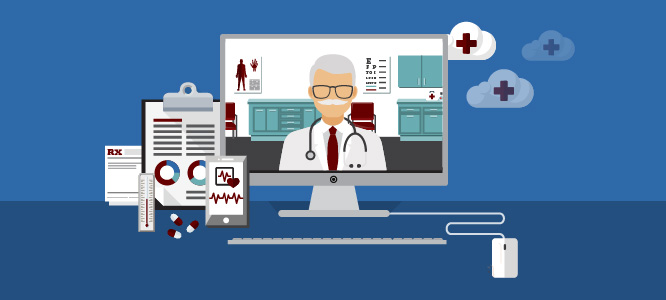If you are researching your telemedicine options, applying for a grant or just need to put your budget plans together, here are six key elements and associated costs for you to consider.
1. Medical Devices for Specialties
The specific medical devices you need may vary depending on the specialties you plan to service with telemedicine. The good news is you don’t need to have all the answers right away, because many equipment providers have scalable and modular telemedicine systems. This means you can purchase just what you need to get started and then add additional devices later on as your program expands into additional specialties.
The cost of medical devices for basic primary care services can range from $5,000-$10,000, and this would include devices such as an examination camera, ENT scope and digital stethoscope.
2. Communication Platform and Video Conferencing Needs
How you plan to manage the patient-to-remote encounter is also a key component to consider for clinical telemedicine applications. Since you are communicating a patient’s critical diagnostic data, the optimal choice is to do it securely and in real time. After all, the beauty of telemedicine is the functionality to have a live interaction between a patient and a remote specialist.
AMD Telemedicine recommends using a Web-based encounter management portal to communicate and aggregate medical device data and share it live with the remote physician. This is truly the best way to offer telemedicine services that are as close to an in-person visit as possible. For video conferencing, it is best to first evaluate any video conferencing investments your organization might have already made to see if these can be leveraged for your current application. Many times they integrate seamlessly with encounter management platforms.
Depending on your video conferencing needs, you can complement a Web-based telemedicine portal with either software- or hardware-based video conferencing. To go the software-based route can cost as little as $1,500 per patient site with no cost for the remote provider. The cost for hardware-based video conferencing can start around $10,000 per patient site and increases with the number of remote provider sites you need.
3. Packaging Design and Mobility
Telemedicine carts, cases, wall mounts and other equipment are all just various ways to package the telemedicine hardware and software. Although there is a difference in how aesthetically pleasing they are (or are not), the main thing to keep in mind is whether this packaging will fulfill your intended use, not just now but also in the near future.
Ideally you want a telemedicine cart or case that is modular and can be easily configured for additional medical specialties so it can evolve with your program. For some applications, such as school-based health centers or long-term care facilities, it is helpful to select a telemedicine system that is an all-in-one package. This helps streamline the purchasing, maintenance and support for those that don’t have a dedicated IT team for their telemedicine programs. All-in-one telemedicine systems that include the telemedicine software, primary care medical devices and the mobile cart/case can range from $20,000 to upward of $28,000.
4. Bandwidth and Internet Connection Recommendations
You may be pleased to know that you don’t need to invest in a significant infrastructure overhaul to make telemedicine a reality for your clinic. Of course your specific needs will vary depending on factors such as location and size or your organization, but the most important consideration is not how much bandwidth you need, but rather how reliable and consistent your bandwidth is.
The most common Internet connections are shared with others, which can cause the upload and download speeds to lag and be interrupted at busy times. So finding a reputable Internet service provider with a commitment to reliable service is the first step. If possible, purchase a business-grade service so you experience a more consistent bandwidth capability to ensure your real-time data is not interrupted or compromised in any way.
5. Training
You already staff your organization or practice with top-notch doctors and nurses, so the next step is to provide these healthcare professionals with the skills and knowledge they need to best make use of your new telemedicine technology in daily operations.
Fortunately, clinical telemedicine equipment training isn’t a complicated need to meet, especially if your staff has any familiarity with basic medical devices and modern communication technology.
There are two types of training programs to ensure long-term success of clinical telemedicine programs: user training for clinicians and nurses, and technical training and installation for the IT staff. Training programs like these can range from $200 to $2,000 per site depending on the complexity of equipment, number of users and other factors. Additionally, the American Telemedicine Association is a fantastic resource for training and education.
6. Support
Finally, the increased reliance on network connectivity and Internet technology at your office means that you’ll need to ensure that you have adequate IT staff support. This is likely more of a concern for smaller practices that may not have an in-house IT department. It’s a good idea to talk to your telemedicine vendor to determine if it provides installation services, as well as what technical support options are available if you don’t have an IT staff of your own.
Navigating the waters of telemedicine can be much easier with the help of industry experts working alongside you and your clinic’s employees. Visit www.amdtelemedicine.com to learn how you can begin thinking about your own custom telemedicine solution.





